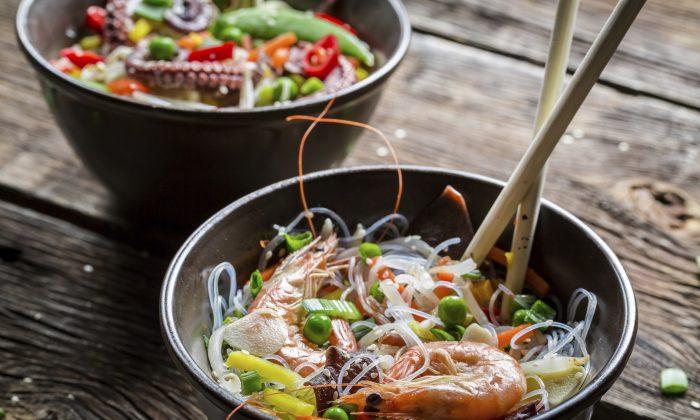In our super-sized world, it’s not easy to eat less at meals. But a new study suggests even modest incentives to eat smaller portions can pay off in a big way.
Call it the “Happy Meal effect.” Given the choice between a full-sized meal and one half the size with a modest “prize,” people will consistently choose the smaller meal. What’s better, it doesn’t take a free car to motivate healthier eating. Just the chance of winning a $10 lottery is enough.
Researchers say the findings could be a way to fight obesity rates and health care costs.
“Portion sizes at US restaurants are often two or three times what they were 20 years ago, which is also distorting how much we eat at home,” says Deborah MacInnis, professor of business administration and professor of marketing at University of Southern California’s Marshall School of Business. “The increase in portion size directly parallels the increase we observe in obesity.”
Earbuds and Gift Cards
Giving consumers an incentive for choosing smaller meal portions means lower daily caloric intake and also helps consumers realize that smaller portions won’t leave them hungry, she says.
In the first of three experiments, sixth-graders were offered the choice between a 9-inch sandwich and a 4.5-inch sandwich and inexpensive earbuds. The majority of children chose the smaller sandwich.
In a second experiment with adults, half-sized portions were paired with the chance to win a $100 Amazon gift card or the chance to win 10,000 frequent-flyer miles accepted by all major airline loyalty programs. The majority chose the incentive and made that choice consistently over three days.
A third experiment had similar results in a real restaurant setting with customers who came in with the intention of buying a full-sized sandwich, but opted for the half-size and a chance to win a $10 lottery.
“Our research shows that small and even uncertain incentives motivate less food intake,” MacInnis says.
Fewer Calories
The findings showed that the Happy Meal Effect is robust across different non-food incentives, foods, populations, and time. Even hungry individuals were motivated to switch from the bigger to the smaller portion size when the smaller portion was paired with an appealing gamble to win money. And people consistently chose the smaller meal-plus-incentive even when it was priced the same as the full-sized meal.
But did those hungry people who chose the half-sized portion compensate later in the day? The researchers measured total calorie intake for participants in the second experiment and found that not only did they not compensate, but they actually consumed fewer total calories compared to their baseline day.
“This finding is interesting as it supports earlier research that found that reductions in portion size are additive and lead to prolonged decreases in food intake,” the researchers write in the study, published in the Journal of Experimental Psychology: Applied.
While some restaurants and food producers have recently eliminated smaller portion sizes due to decreased demand, the Happy Meal effect shows how it may be economically feasible for firms to maintain smaller-sized portions that are also desirable alternatives to larger-sized options.
“Although such rewards are common in the marketplace, they have not yet been bundled with smaller food offerings,” the study says.
Food providers can remain profitable because the payouts are nominal and costs can be distributed over dozens of customers, MacInnis says. “That’s good for healthy consumers and healthy businesses.”
Antoine Bechara, professor of psychology at USC and Martin Reimann, assistant professor of marketing at University of Arizona are coauthors of the study.
[aolvideo src=“http://pshared.5min.com/Scripts/PlayerSeed.js?sid=1759&width=480&height=350&playList=518769187&responsive=false&pgType=console&pgTypeId=editVideo-overviewTab-copyCodeBtn”]
Source: Julie Riggott for USC. Republished from Futurity.org under Creative Commons License 4.0.




